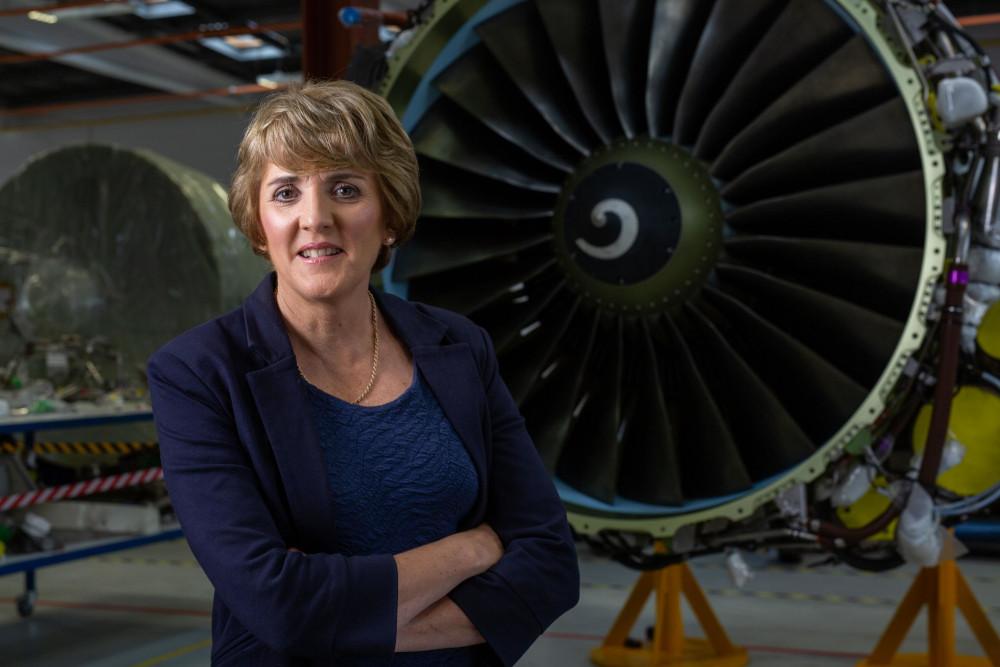Fast 5: Shannon Engine Support Navigates CFM56 Market, Supply Chain Challenges

Julie Dickerson, CEO of Shannon Engine Support (SES), which specializes in CFM56 and LEAP engine leasing, discusses how demand for the CFM56 engine is looking in 2022 and how the company is navigating the global supply chain issues.
The impact of the COVID-19 pandemic on the engine market was unprecedented. How did SES navigate the crisis and its lingering effects?
We had to come up with short-term, medium-term and long-term plans for the business very quickly. We very quickly moved from an office environment to home working. We had to keep the business going as usual; look after the people and the team and ensure that we could keep supporting our customers. So, a lot of that was around communicating with the customers, understanding what their needs were and analyzing. At the time when we shut down, we had no idea how long it was going to go on for. I suppose initially we all thought it was going to be three months and as time progressed, we got into more discussions about deferrals, some restructurings and then we moved from that into growth plans. So, we were able to go from looking after the team and cash conservation to now starting to look back at growing and funding.
How is the engine market recovering in 2022, given challenges around the global supply chain and geopolitical factors such as the Russian invasion of Ukraine?
We started to see a bounce back in aviation a lot quicker than some people had anticipated, particularly in North America and Europe. We had seen China as well, although that has slowed again. Russia did have a big impact and that is certainly having an ongoing impact in terms of supply chain issues. The supply chain issue is sort of coming from the channel lockdowns as well, but when you are an engine lessor, sometimes those things are more positive than negative. When we work with our customers and understand how we can support them to their own success, we start to see things improving. So, there is always an opportunity and a crisis.
Has demand for CFM56 family engines proved robust in the past 2.5 years? Have you seen any interesting trends related to specific engine variants in terms of pricing and availability?
There certainly was a change two and a half years ago; the demand evaporated at the end of 2019. We were expecting 2020 to be a very strong year and, of course, the first two months were—and then passenger demand dropped off. Passenger demand is what drives the requirement for serviceable aircraft and engines.
In summer 2021 we did see a gradual increase in domestic demand in some of the larger economies like China, the U.S., Europe and the Middle East. A lot of airlines were flying with the most fuel-efficient aircraft, so they really wanted to reduce their fuel burn and their maintenance costs. So, there was not a huge demand for spare engines, but we are starting to see it picking up now.
There is additional aircraft capacity required across the globe. Airlines are still conserving cash; they are still not profitable. Leasing is a better way to preserve cash and I think we are starting to see some changes and a little bit of tightening in the CFM56 market in terms of engines available for lease, which obviously drives a slight improvement in pricing then as well.
What are you seeing in terms of MRO shop visit demand returning for CFM56 family engines? Is this similar to pre-crisis levels?
No, it is not similar yet. It has not reached the 2019 levels (which were huge), and we anticipate it to keep growing out into the future years. We have seen that the demand for spares has been driven by shop capacity constraints, supply chain issues, turnaround time delays, resource constraints and hiring constraints in the MRO shops. So, we are talking to the airlines, which are saying that they are challenged in finding slots for their engines, and that then helps us with our leasing business, but it has not gone back to the pre-crisis levels.
Given the impact of interest rates on fuel prices, do you foresee a wave of older legacy engines being retired in the near future?
I think it is always difficult to predict. During COVID-19, we saw a chart saying there was going to be a wave of retirements, but I don't think we are really seeing that for a couple of reasons. One is there are lower than expected new aircraft production rates. That means the airlines keep flying their older technology aircraft. While there might be a higher fuel burn, they are very reliable and the engines are very reliable. And for some airlines, the aircraft are well depreciated so that the cost is not as significant.
I'm not convinced that we will see a huge wave of retirements in the short-term. A lot of newer production aircraft are coming on stream, interest rates are going up and the cost of capital is high as well. So, I think it is a very dynamic ecosystem and hard to predict, because we seem to be in a world that is changing all the time. Just when we think we are coming out of one thing, something else seems to come to the [forefront] and I think it is something [where] we will have to wait and see.
Julie Dickerson will be speaking at Aviation Week's Aero-Engines Europe conference in Dublin, which runs from Sept. 7-8.





